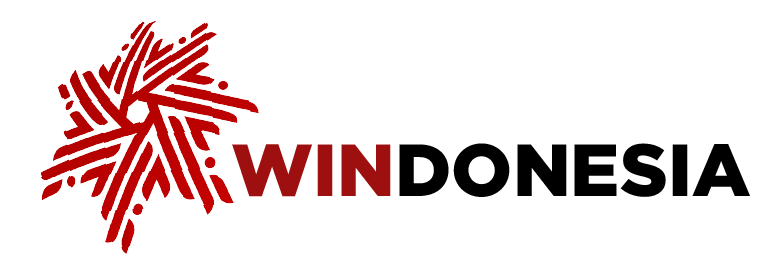Sector
Agriculture
Indonesia, with its archipelago of volcanic soil and plentiful rainfall, offers a natural abundance that sustains the nation and plays a crucial role in its economic prosperity. One of the country’s leading sectors is agriculture, supporting the livelihoods of millions and making a significant contribution to Indonesia’s Gross Domestic Product (GDP). From rice paddies to coffee plantations, this diverse range of crops reflects the country’s unique geography and climate, making it a powerhouse in the global agricultural market.
View moreAgriculture
Indonesia, with its archipelago of volcanic soil and plentiful rainfall, offers a natural abundance that sustains the nation and plays a crucial role in its economic prosperity. One of the country’s leading sectors is agriculture, supporting the livelihoods of millions and making a significant contribution to Indonesia’s Gross Domestic Product (GDP). From rice paddies to coffee plantations, this diverse range of crops reflects the country’s unique geography and climate, making it a powerhouse in the global agricultural market.
In 2022, Indonesia’s agricultural sector generated approximately Rp2.4 quadrillion in GDP. This sector alone accounts for 12.4 percent of the country’s GDP, underlining its importance to the national economy. The following year, the country experienced a steady growth rate of 1.3 percent in this sector.
Agriculture serves as a key sector for the national economy in various Indonesian provinces, including Aceh, North Sumatra, West Sumatra, Riau, Jambi, Bengkulu, and South Sumatra. Additionally, the provinces of Lampung, Bangka Belitung, West Java, Central Java, East Java, and West Kalimantan, among others, also consider agriculture as a key sector.
This sector offers a rich variety of commodities, including paddy, corn, soybean, sweet potato, and cassava – all staple commodities that play a vital role in sustaining Indonesia’s food supply. Additionally, crops such as cocoa, coconut, coffee, and palm oil are essential for export income and providing job opportunities. In terms of employment, the agriculture sector employs nearly 28 percent of the country’s workforce.
The country’s agricultural sector has also attracted significant foreign investment in 2023, with roughly US$2 billion in direct contributions. With this sector helping sustain Indonesia’s food supply, the country’s paddy production statistics that same year indicate that roughly 10.2 million hectares of land were harvested, yielding an estimated 56.63 million tons of dried unhusked rice (GKG). Once processed for consumption, this translates to approximately 30.9 million tons of rice available for the population.
In a move to strengthen its agricultural foothold within Southeast Asia, Indonesia seeks to expand cooperation with Vietnam in both agriculture and aquaculture. Indonesia and Vietnam are forging a partnership to modernize their agriculture and aquaculture industries. This collaboration will leverage digitalization for improved efficiency and invest in research and development to enhance the quality and global competitiveness of their agricultural and fishery products.
Latest News
The administration of Prabowo Subianto is reforming the disbursement of fuel and electricity subsidies to improve state budget efficiency. These subsidies have long been criticized for disproportionately benefiting upper-middle-class households, who consume more energy, rather than the poor and vulnerable groups they are intended to support. As a result, the government now aims to better target subsidy distribution and reduce its long-standing fiscal burden. The urgency to optimize subsidy spending has also grown amid rising expenditures for several major government programs.
Finance Minister Purbaya Yudhi Sadewa outlined the subsidy reform plan during a joint working meeting with state asset fund Daya Anagata Nusantara (Danantara) and House of Representatives Commission XI on Dec. 4. He acknowledged that the well-off, and even the ultra-wealthy, remain among the beneficiaries of energy subsidies. The reform aims to significantly reduce access for households in income deciles 8–10, redirecting support toward lower-income groups in deciles 1–4.
According to the National Integrated Social Economic Data (DTSEN), income deciles 1–5 cover individuals from extreme poverty to the middle-income bracket, while deciles 6–10 range from middle- to upper-income levels. The Finance Ministry has been given six months to finalize the subsidy distribution strategy, with the entire policy reform design expected to be completed jointly with Danantara within two years. Meanwhile, the Energy and Mineral Resources Ministry revealed that the reform will cover subsidies for liquefied petroleum gas (LPG) and electricity.
The subsidy reform will be formalized through a new presidential regulation (Perpres) that amends existing frameworks, including Perpres No. 117/2021, the third revision of Perpres No. 191/2014 on fuel provision, distribution and retail pricing, and Perpres No. 70/2023, which updates Perpres No. 104/2007 on the provision, distribution and pricing of 3-kilogram LPG cylinders.
On the financial administration side, the Finance Ministry has issued Ministerial Regulation No. 73/2025 on the provision, calculation, payment and accountability for compensation funds related to fuel pricing and electricity tariffs. Previously, compensation to Pertamina and PLN was disbursed quarterly or even semi-annually. Under articles 8 and 11 of the new regulation, Pertamina and PLN may now receive up to 70 percent of their compensation for subsidized fuel and household electricity tariffs following a monthly review by the Finance Ministry's Inspector General. The remaining portion will be disbursed after an annual audit by the Development Finance Comptroller (BPKP), as stipulated under Article 28. The initial compensation portion may also be adjusted based on overall budget conditions or previous audit findings from the Supreme Audit Agency (BPK).
Danantara CEO Rosan Perkasa Roeslani emphasized that energy subsidy reform would improve the cash flow of state-owned enterprises (SOEs) tasked with public service obligations. He noted that previous cooperation between Danantara and the Finance Ministry in shifting fertilizer subsidies toward a more market-based mechanism had progressed well.
As of October, realized government spending on subsidies reached Rp 314.9 trillion (US$18.91 billion), or 66.3 percent of the 2025 state budget allocation. This includes Rp 194.9 trillion in subsidies and Rp 120 trillion in compensation payments. Distribution of subsidized fuel reached 13,915 kiloliters (kL), or 72 percent of the 19,410 kL target; subsidized 3-kg LPG distribution reached 6.35 million kg (78 percent of the target); and electricity subsidies reached 42.5 million consumers, exceeding the target of 41.3 million.
Energy subsidy reform is necessary given the fiscal burden it imposes and the resulting constraints on priority government programs. However, overly aggressive cuts, an inherent risk amid current austerity, could have negative social impacts, weaken consumer spending and dampen economic growth. The government should explore ways to curb subsidy spending without introducing additional bureaucratic costs.

